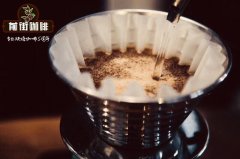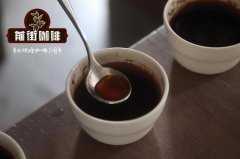Cosmopolitan Coffee Series Coffee Coffee Coffee

Professional Coffee knowledge Exchange more information about coffee beans Please note the coffee workshop (Wechat account cafe_style)
Front Street-Costa Rica Carnett Maurette
Costa Rica Canet Musician Series Mozart
Cosmopolitan Canet and Maurette
Production area: Tarazhu
Variety: Kaddura, Kaduai
Altitude: 1950
Processing: grape honey processing
Costa rica, located in Central America, is at the same time controlled by Pacific and Atlantic currents and seas. With many high-altitude volcanoes up to 2000 meters above sea level, coffee nuts grow slowly in the fertile volcanic ash soil and cold environment at high elevations, giving birth to coffee beans with complete and rich flavor.
Costa rica can be divided into different seasons, the peak season is from December to April, the coffee harvest is from December to April, and the rainy season is from May to November. In recent years, micro-processing systems have been established, and since the water consumption is only 5% of the total water consumption, and there is no need for large sinks and aeration sites, the investment required is much smaller. The "honey processed coffee", which has low acidity, high temperature and sweet fragrance, has become a hot spot in the coffee industry in recent years.
Coffee was planted in Costa Rica as early as a hundred years ago, first on the slopes of the Poas and Barva volcanoes, which is now what I call the central valley. At present, there are eight main production regions in Costa Rica: West Valley in the western valley, Central Valley in the central valley, Tarrazu in Tarazu, Tres Rios in Sanhe, Orosi in Kuangxi, Brunca in Buchanca, Turrialba in Duli Atreba, and Guanacaste in Guaracast.
Tarrazu is one of the major coffee producers here. The Tarazhu region also has a long history of producing coffee, which has been recognized and recognized by the British royal family, even in the Pope's speech.
| | Canet Carnett subscription |
The Canet Valley is located in the highest altitude region of the Tarazhu region and is the most densely planted fruit region in Costa Rica. Carnett always focuses on planting passion fruit, and the amount of coffee is equally rare. Only one specific region grows coffee, which takes special care. All coffee peaches are picked by hand and only ripe peaches are harvested, but they will be picked again after a short period of time before they are processed after harvest.
Processing method
| | Grape honey processing method |
Retain 100% fruit and zero water treatment methods. The precision of the processing method of honey is improved, which requires strict control of time. On the day when coffee peaches are harvested, the harvested coffee fruit is poured into a big trough, and the mature fruit will sink to the bottom of the water; the fruit that is not fully developed or overripe will surface, and these floating beans need to be removed. Leave the coffee fruit on an elevated bed to dry for at least three days, then peel the peach and keep the fruit before drying. In this period, the climate factor is the key to the success of honey processing.
Keep turning these coffee peaches during the drying process to make them dry evenly, but keep a good grasp of the turning rate and slow drying to ensure that the coffee is fermented, but not too slow to achieve the degree of fermentation.
Raw bean analysis
| Kaddura Caturra, Kaduai Catuai Kaddura and Kaduai are more common in American beans, especially in Central America.
Kaddura
Kaddura is a species of bourbon. It was discovered in Brazil in 1937. Its production and disease resistance are better than bourbon, and the plant is short, easy to harvest, strong in adaptability, and does not need to be covered. It can also be healthy under direct exposure, commonly known as exposed coffee (Sun Coffee). Kaddura is co-planted at a low altitude of 700m to a high altitude of 1700 m. The altitude response is very strong, but the higher the altitude, the better the taste, and the lower the yield. This is the fate of high-quality beans.
Kaduai
Kaduai is also an Arabica hybrid. It is a hybrid of Mundo Novo Montgomwood (New World) and Caturra Kaddura. It has better resistance to natural damage, especially resistance to cold and rain. It inherits the low point of Kaddura's body and changes the deficiency of Arabica. On the other hand, it is the result that it is not easy to fall when it is strong, and it makes Arabica's fruit weak.
Raw beans look dark in color, typical honey-processed coffee beans, with fresh orange acidity and a hint of fermented fruit.
END
Important Notice :
前街咖啡 FrontStreet Coffee has moved to new addredd:
FrontStreet Coffee Address: 315,Donghua East Road,GuangZhou
Tel:020 38364473
- Prev

Bolivian Coffee Coffee Taste, Bolivian Coffee Taste, Bolivian Coffee Coffee, tomorrow's Coffee Coffee
Professional coffee knowledge exchange more coffee bean information please follow the front street of the coffee workshop (Wechat official account cafe_style)-tomorrow Pacific Plan Bolivia is one of the most prestigious countries in Latin America, a domestic country, adjacent to Brazil and Colombia. Of course, it is a country with a strong export of coffee, but its output is relatively scarce.
- Next

Coffee production area of Tanzania: Kililitsu volcano coffee wash has a thick and solid taste
Qianjie-Tanzania is located in Africa and is a small producer of coffee. Coffee has not been planted for a long time, and coffee is also known as Kahawa in Tanzania. The United Republic of Tanzania is an African country located in Africa. It is bordered by Kenya and Laos to the north, Laos, Mozambique and Tanzania to the south, and Laos to the west.
Related
- Being chased out of the rain in front of Starbucks?! Store: Sheltering from rain under umbrellas poses a safety hazard
- The white moonlight has changed?! Lucky launches "Big Winter Pear American"
- Hand-brewed coffee three-stage method, high-sweet and universal brewing method to share! What does the high sweet water level of hand-brewed coffee mean?
- What is the difference between raw, refined and full espresso coffee? How to extract espresso and taste good?
- A complete list of coffee bean names and their meanings! What is Yejia Shefi coffee? Where is Mantelin coffee?
- What grade does Arida Manor Kaduai coffee beans belong to? What treatment is Arida ASD slow anaerobic sun exposure?
- The milk tea cup becomes smaller?! Overlord Tea Girl launches a new "Return to Yunnan" series
- Accused of selling counterfeit and high-priced coffee beans! Well-known boutique coffee brand "Oukelao" bowed and apologized!
- How to make espresso dumplings? Can I eat coffee and glutinous rice balls together?
- Save the unformed and stagnant powder cakes in one second! What is the problem with stagnant water in the powder bowl of the espresso machine?

